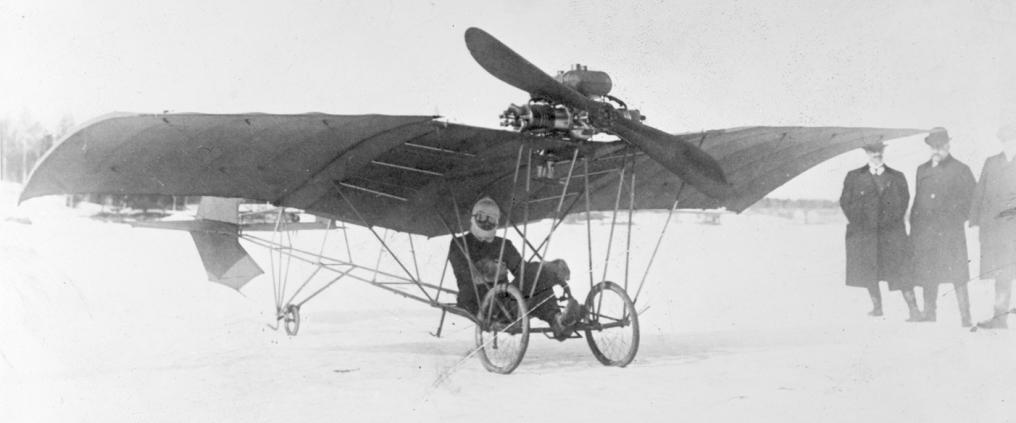To celebrate Finland’s centenary, Finavia publishes a 10-part series on the history of Finnish aviation from 10 decades. This first part tells the story of the 1910’s, when the first airplane flights took off in Finland.
1910 to 1914 – The pioneer era: first trials and air shows
Though American Wright brothers had managed the first successful airplane flight already in 1903, it was not until the turn of the 1910s that motor-powered aviation really made its international breakthrough. Especially French aviation pioneer Louis Blériot’s flight over the English canal in 1909 proved to the mass audience, that airplanes were more than the latest fancy for madcap megalomaniacs.
”Before [pilots] had been thought of as daredevils or crazy thrill-seekers, but now, they were undisputed heroes,” Finnish K. W. Jarnamo describes the mood of the era in his book about early Finnish aviation.
In Finland, which was then still a part of the Russian empire, the first trials and successful airplane flight shows were also witnessed in the early 1910s.
The first recorded flight with an airplane in Finland was achieved at the end of “Aviation week” held in Helsinki in 1911. Danish pilot Robert Svendsen flew with a Voisin biplane successfully for 1,5 minutes and 600 metres. As the location of the flight had been changed away from the city center, only a handful of people witnessed this pioneering flight.
The final breakthrough for airplane flights in Finland was perhaps Russian aviation pioneer Sergei Usotchkin's successful air shows in Vyborg and Helsinki in 1912. In Helsinki, Usotchkin flew around Töölönlahti bay, gathering an audience of thousands of people to witness his heroic act.
The pioneering era of civil aviation was short-lived, however, as the Russian Governor-General Seyn banned all aviation in Finland in 1912. As Europe’s great powers were militarizing, civil aviation was considered a threat by Russian leadership.
1914 to 1919: Aircrafts in warfare: Word War I and the Finnish civil war
The First World War marks a major shift for aviation: flying was no longer a hobby for pioneering daredevils but a military effort led by professional pilots. At the same time, aircrafts became weapons of warfare, which greatly sped up their technical evolution. During the war, planes developed from light-weight wooden and canvas models to all-metal aircrafts.
In Finland, the first, water airports were established in 1916 and 1917 to support the Russian war effort, and the first Finnish pilots were trained in the Russian military, fighting, for instance in the Ukraine front.
After Finnish independence in 1917, aircrafts also played a role in the country’s short but bloody civil war of 1918. The White troops, led by the Finnish senate, were supported by the German Empire, and the rebelling Red Guards by the newly established Soviet Russia, so both parties received foreign aircrafts, which were used during the war.
The first airplane of White Finland was a donation from a Swedish count von Rosen. The aircraft arrived in Finland on 6th March 1918, which is still celebrated as the founding date of the Finnish Air Force. The Thulin typ D model plane also featured van Rosen’s personal lucky sign – a blue swastika – painted on the wings, and was adopted as the official insignia of the Finnish Air Force until the end of the Second World War.
The Red Guards also used aircrafts in the war, mostly planes left behind by the Russian military. The significance of air forces in the Finnish Civil War was, however, relatively small and they were used more for reconnaissance and airborne leaflet propaganda than for combat.
After the war, the winning White Finland’s 40 aircrafts became the fleet of the Finnish Air Force. Mainly, the aircrafts were hydroplanes, taking off and landing on water.
By the end of the 1910’s, the air force had become an permanent part of the Finnish military, and interest in civil aviation also enjoyed a resurgence, with the Finnish Aviation Club launched in 1919. It’s fair to say that the decade established the foundation Finnish Aviation.
Read also our article series about the history of Helsinki Airport



